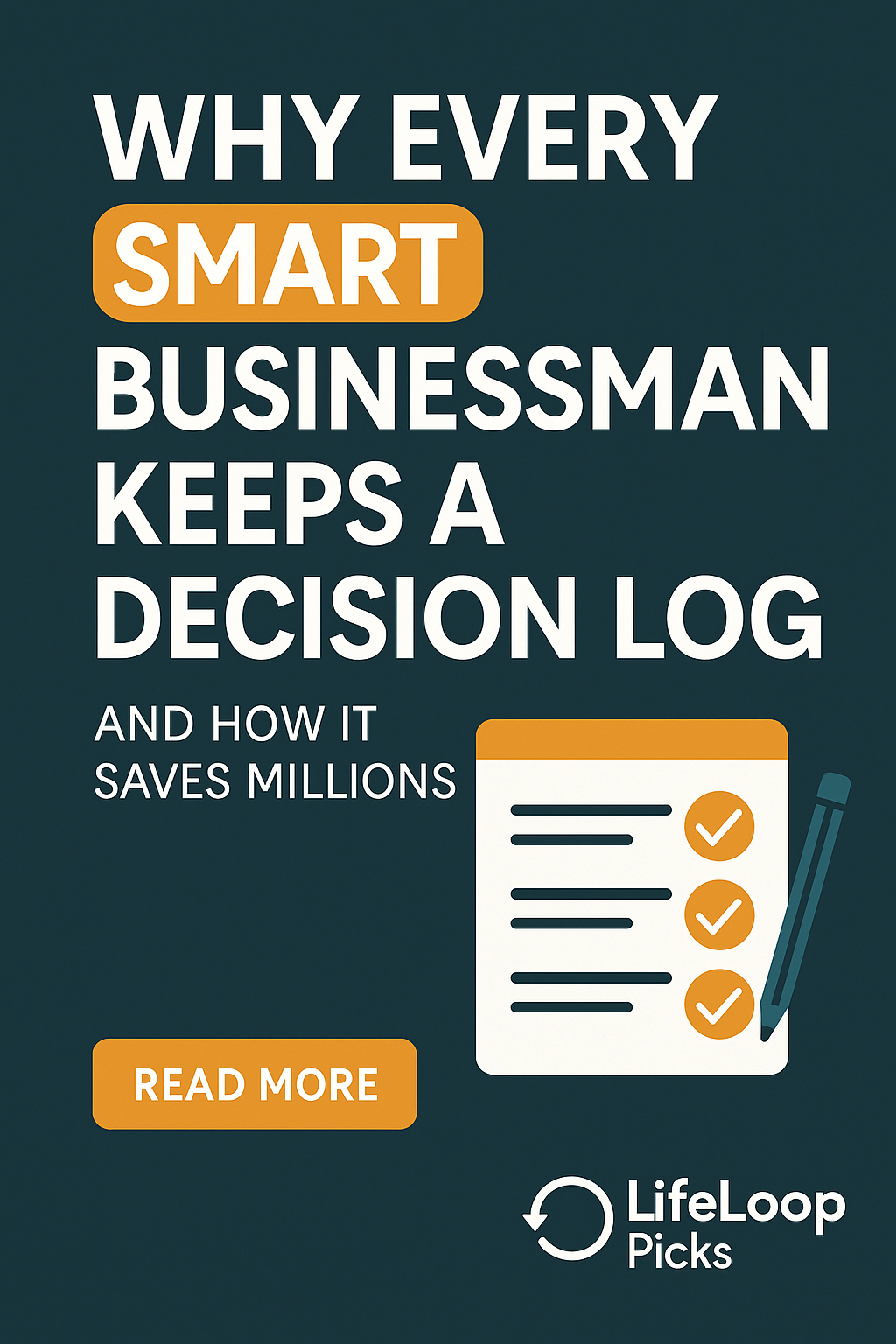In the high-stakes world of business, decisions are currency. Every choice, big or small, carries weight — impacting revenue, strategy, team morale, and your bottom line. Yet, how often do we make a decision, move on, and never truly reflect on its outcome or the process behind it? This is where many businesses bleed money and miss massive opportunities.
The smartest business leaders don’t just make decisions; they meticulously log them. This isn’t just about record-keeping; it’s a powerful tool for learning, accountability, and strategic growth that can genuinely save (and make) millions.
The Hidden Cost of Unlogged Decisions
Without a systematic way to track your choices, you’re flying blind. This leads to several expensive pitfalls:
- Repeating Mistakes: Ever feel like you’re facing the same problem, or making a similar poor choice, again and again? Without a log, your brain struggles to connect past actions to present outcomes, leading to recurring, costly errors.
- Missed Opportunities: Did a great idea fail because of poor execution, or was the idea itself flawed? Without tracking, you can’t dissect the past to identify what worked and what didn’t, missing chances to refine and capitalize.
- Hindsight Bias: After an outcome is known, it’s easy to rationalize a decision (“I knew that would happen!”). A decision log forces you to capture your thinking before the outcome, providing an honest record for true learning.
- Lack of Accountability: When decisions aren’t documented, it’s harder to hold yourself or your team accountable for the rationale and results, hindering growth and learning.
The Brain Science Behind the Breakthrough
A decision log isn’t just a fancy journal; it’s a powerful tool leveraging fundamental cognitive principles:
- Metacognition: The act of reviewing your decisions explicitly engages metacognition — thinking about your thinking. This self-awareness helps you understand your biases, improve your reasoning, and learn more effectively from experience.
- Reinforced Learning: By creating a formal feedback loop, you transform vague experiences into concrete lessons. Your brain builds stronger neural pathways between actions, context, and outcomes, leading to better future judgment.
- Reduced Cognitive Load: Externalizing your decision-making process frees up your working memory. Instead of trying to recall complex chains of thought, you have a clear record, reducing mental fatigue and allowing for more strategic thinking.
- Pattern Recognition: Over time, a decision log reveals patterns in your successes and failures. You’ll identify your strengths, common pitfalls, and environmental factors that consistently influence outcomes, helping you make more predictable and positive choices.
The Decision Log: How It Saves (and Makes) Millions
This isn’t an exaggeration. By improving the quality of your decisions, a log directly impacts your bottom line:
- Avoid Costly Failures: By learning from past missteps, you avoid repeating expensive marketing campaigns, product launches, hiring mistakes, or investment choices.
- Optimize Successful Strategies: When you know why something worked, you can replicate and scale it. This leads to more efficient resource allocation and higher returns on investment.
- Faster, Smarter Decisions: With a clear historical record and an understanding of your own decision patterns, you can make future choices with greater speed and confidence, reducing analysis paralysis.
- Enhanced Strategic Foresight: Regularly reviewing decisions helps you spot emerging trends, anticipate market shifts, and identify competitive advantages before your rivals do.
- Improved Delegation & Team Performance: A well-maintained decision log can serve as a living case study, guiding your team to make better decisions independently and aligning their choices with your strategic intent.
How to Build Your Own Million-Dollar Decision Log
You don’t need complex software. A simple spreadsheet, a dedicated digital note, or even a physical notebook can work. The key is consistency and structure.
For each significant decision, capture these points:
- Date: When was the decision made?
- Decision: Clearly state the choice you made (e.g., “Launch X product by Q3,” “Hire Jane Doe for role Y,” “Invest $10k in marketing channel Z”).
- Context/Situation: What was the environment like? What were the key factors at play?
- Assumptions: What did you assume to be true when you made this decision? (This is crucial for learning.)
- Expected Outcome: What result did you anticipate?
- Rationale/Why: Why did you make this particular choice? What alternatives did you consider and reject?
- Actual Outcome (to be filled later): What actually happened? (Give it time — days, weeks, months, depending on the decision’s scope).
- Lessons Learned: What did you discover? What would you do differently next time? What biases were at play?
Consistency is key. Make it a part of your weekly review or daily shutdown routine to log new decisions and check in on past ones.
Your Business’s Most Valuable Asset: Learning
The world’s smartest businessmen aren’t just making good decisions; they’re creating a system that allows them to learn from every single one. A decision log transforms raw experience into actionable intelligence, turning potential pitfalls into stepping stones and maximizing every opportunity for growth. It’s not just a record; it’s your personal business school, saving millions by helping you make smarter bets, every single time.
Are you ready to stop repeating mistakes and start learning strategically? What’s the first decision you’ll log?

